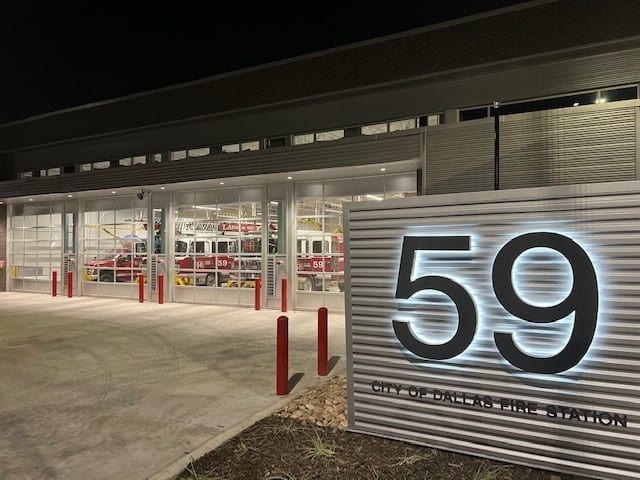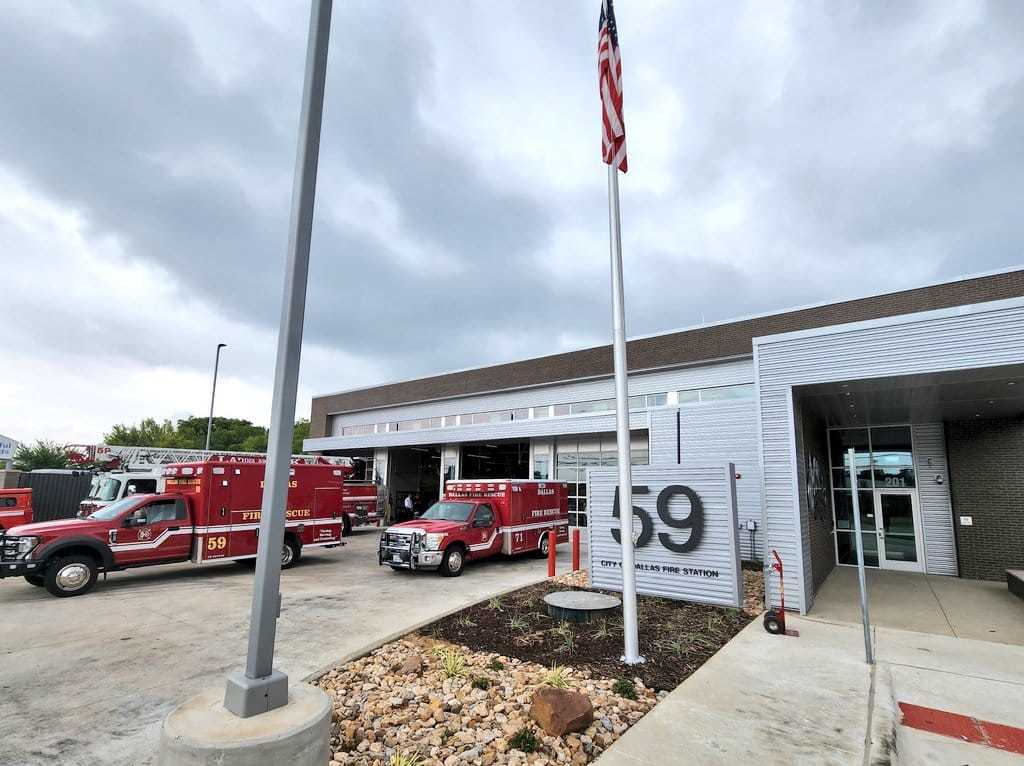Due to the size of the facility and proximity to Dallas’ wildland areas that are at risk for Southern Plains Wildfire Outbreaks, its ideal location accommodates the large equipment needed to combat wildland fires. The once unattainable capability for one of the nation’s largest at-risk cities is now one of its biggest assets for the security and well-being of the community. The facility also added three full apparatus bays for equipment, an EV charging station and an ICC-500 tornado storm shelter. With these combined features and a renovation that nearlydoubled the station in size, it’s now capable of offering aid to community members in ways like never before and provides firefighters with the additional resources necessary to serve their community most effectively.
Updated technology in fire stations is essential to keeping communities safe. Asimportant are the capabilities to accommodate the specialized needs of the community. According to Dallas Fire Rescue Lieutenant, Nelson Rossy, “The new fire stations provide our Dallas Fire Rescue team the best-in-class facilities they deserve. The new stations not only offer state-of-the-art comfort and safety for our firefighters but also include technology that will serve and protect the Dallas community for years to come.”
Advanced Protection for First Responders
It’s crucial to prioritize the protection of communities, but it’s also just as important to prioritize the safety and health of the men and women who operate out of these facilities. There are 27,186 fire departments registered with the National Fire Department Registry with an estimated amount of 317,310 firefighters currently employed. The leading cause of death of firefighters is cancer due to harmful carcinogens, gasses and chemicals that are inhaled while on the job. Sixty-eight percent of firefighters develop cancer compared to 22 percent of the general population. Protecting the firefighters who serve the community has become a leading priority for our team during the design of new and existing stations.
Our team had an opportunity to create better facilities for the community, and based on Lieutenant Rossy’s research, we developed healthier work environments for the firefighters too. The need to protect firefighters and their health has become a focal point, due to the exposures they face daily. Two fire stations in Dallas, amongstthe first in Texas, have implemented pressurized full transition zones to lower exposure to carcinogenic pathogens.
Still an emerging addition to fire stations, a pressurized transition zone is an advanced technology that allows firefighters to remove their equipment in a separate zone within the station, away from where they eat and sleep. Using a negatively pressurized filtration system, the harmful carcinogens remain in the red zone, unable to contaminate the other zones. Once they have removed their equipment, firefighters enter a safe, positive-pressurized zone of the station, called the ‘green’ zone. Creating the pressurized full transition zone offers an improved facility and a healthier, lifesaving work environment for firefighters. Doing this allows firefighters to effectively do their jobs without fear of these exposures and save the lives of those in their respective communities.


